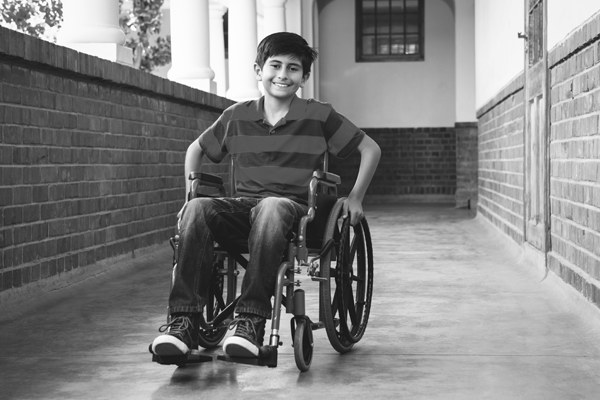Brain Characteristics Associated with Epilepsy and Internalizing Disorders
Brain Characteristics Associated with Epilepsy and Internalizing Disorders https://pediatricsnationwide.org/wp-content/uploads/2020/02/sad-boy-1024x575.jpg 1024 575 Mary Bates, PhD Mary Bates, PhD https://secure.gravatar.com/avatar/c6233ca2b7754ab7c4c820e14eb518c8?s=96&d=mm&r=g- February 27, 2020
- Mary Bates, PhD

Diffuse alterations in brain structure and function are seen in youth with epilepsy and symptoms of anxiety or depression.
Internalizing disorders, such as depression and anxiety, are common in patients with epilepsy. Specific brain characteristics – structural changes in the hippocampus and amygdala as well as some differences in structure and function of more frontal areas – have been recorded in adults with both epilepsy and depression. These patterns seem to characterize the presence of internalizing disorders in adults with epilepsy.
Much less is known about whether these brain patterns also exist in children with epilepsy and internalizing disorders.
In a new paper published in the journal Epilepsy & Behavior, researchers from Nationwide Children’s Hospital examined measures of brain structure and function associated with internalizing symptoms in youth with intractable epilepsy. The researchers took advantage of the neurological and psychological data collected when patients were evaluated for surgical treatment of their epilepsy. This included magnetic resonance imaging scans and positron emission tomography scans of their brains.
In their sample of 45 children and adolescents with intractable epilepsy, 42% scored in the clinical range for internalizing symptoms. Youth with internalizing problems did not differ from those without in any patient- or illness-related factor, such as duration, lateralization or type of epilepsy.
However, clinical internalizing symptoms were related to diffuse reductions in brain structure and function.
Adam Ostendorf, MD, an attending pediatric neurologist at Nationwide Children’s and one of the study’s authors, describes the patterns they found in youth as more nonspecific than the patterns identified in adults with epilepsy and internalizing disorders.
“There are specific areas that are typically affected in adults with epilepsy who have depression or anxiety, including mesial temporal structures like the hippocampus and amygdala,” he says. “We found, instead, a broad decrease in cortical volume and function.”
Compared with individuals who scored in the normal range, youth with clinical levels of internalizing symptoms showed an overall reduction in volume and thickness of the cortex. In addition, internalizing symptoms were associated with widespread deficits in glucose uptake in the bilateral occipital and left temporal lobe, extending toward the left inferior frontal cortex.
The findings suggest that internalizing problems in youth with epilepsy are characterized by widespread deficits in brain structure and function.
Michele Morningstar, PhD, a post-doctoral fellow in the Abigail Wexner Research Institute at Nationwide Children’s and first author of the study, says the results reinforce the need for the evaluation of depression and anxiety in clinic visits for youth with intractable epilepsy – particularly if neuroimaging reveals broad alterations in cortical structure and function.
“Additionally, there is evidence that if anxiety and depression are well-managed in individuals with epilepsy, there are benefits for seizure management,” she says. “Helping kids manage internalizing symptoms might benefit the treatment of their epilepsy as well as their quality of life.”
As to why the patterns of brain structure and function characterizing internalizing symptoms is different in youth and adults with epilepsy, Dr. Morningstar says there is still a lot we need to know.
“There could be a developmental component, with repeated seizures in one area over time focalizing the impact on the brain. It could be the heterogeneity in our relatively small sample. We’re not at the point where we can say for sure.”
According to Dr. Morningstar, longitudinal studies with larger samples are essential for understanding the neural correlates of internalizing disorders and epilepsy.
“Studies like these could help us get closer to understanding the progression of this phenomenon, as well as guide clinical decision-making,” Dr. Morningstar says. “The main message is that if you have youth with intractable epilepsy, you need to follow up with them about their mood and behavior.”
Reference:
Morningstar M, Hung A, Mattson WI, Gedela S, Ostendorf AP, Nelson EE. Internalizing symptoms in intractable pediatric epilepsy: Structural and functional brain correlates. Epilepsy & Behavior. 2020 Feb;103(Pt A):106845. Epub 2019 Dec 24.
Photo credit: Adobe Stock
About the author
Mary a freelance science writer and blogger based in Boston. Her favorite topics include biology, psychology, neuroscience, ecology, and animal behavior. She has a BA in Biology-Psychology with a minor in English from Skidmore College in Saratoga Springs, NY, and a PhD from Brown University, where she researched bat echolocation and bullfrog chorusing.
-
Mary Bates, PhDhttps://pediatricsnationwide.org/author/mary-bates-phd/December 27, 2016
-
Mary Bates, PhDhttps://pediatricsnationwide.org/author/mary-bates-phd/
-
Mary Bates, PhDhttps://pediatricsnationwide.org/author/mary-bates-phd/
-
Mary Bates, PhDhttps://pediatricsnationwide.org/author/mary-bates-phd/
- Posted In:
- In Brief






